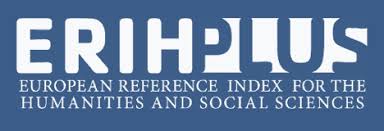№2, 2025
The article presents a new alternative approach for determining the sensitivity of mathematical models. Mathematical models (MM) operate on the basis of input and output, which are transmitted to and extracted from embedded mathematical algorithms. These algorithms, which have parameters, change when these sensitivity parameters of mathematical models change. This change in sensitivity can lead for the better, or maybe for the worse. The construction of a mathematical model is usually accompanied by problems in calculating the influence of inputs (other names: argument or factor). These problems are solved in the field of mathematics, which is called sensitivity analysis of mathematical models. To solve the problem of finding the sensitivity of mathematical models, the author proposes to find a criterion that allows not directly, but indirectly to determine the sensitivity. This criterion is derived on the basis of mathematical logic, and its experimental confirmation is also carried out. Further in the article, using a new criterion, one example is the best sensitivity of computer systems. In the article there is a proof of the criterion using the Monte Carlo method (pp.98-106).
- Blatter, K. (2006) Wavelet Analysis. Basic Theory. Translated from English, Tekhnosfera, Moscow. (In Russian)
- Borgonovo, E.; Castaings, W.; Tarantola, S. (2012). Model emulation and moment-independent sensitivity analysis: An application to environmental modelling. Environ. Model. Softw. 34, 105–115.
- Gul, R.; Schütte, C.; Bernhard, S. (2016). Mathematical modeling and sensitivity analysis of arterial anastomosis in the arm. Appl. Math. Model., 40, 7724–7738.
- Kerimov, A.B. (2024). An algorithm the sequence of artificial symmetric signals for comparison and creating new methods. Problems of Information Society 15(2), 24–29. http://doi.org/10.25045/jpis.v15.i2.03
- Kerimov A.B. (2022). Comparison of some signal recognition methods for their adequacy, Proceedings of the 8-th International Conference on Control and optimization with industrial applications, I, 24-26 August, Baku, Azerbaijan.
- Lamboni, M.; Kucherenko, S. (2021). Multivariate sensitivity analysis and derivative-based global sensitivity measures with dependent variables. Reliab. Eng. Syst. Saf., 212, 107519.
- Yakovlev A.N. (1998). Introduction to wavelet transforms, Textbook, Novosibirsk, NSTU Publishing House, (in Russian)
- Rana, S.; Ertekin, T.; King, G.R. (2018). An efficient assisted history matching and uncertainty quantification workflow using Gaussian processes proxy models and variogram based sensitivity analysis: GP-VARS. Comput. Geosci., 114, 73–83.
- Saltelli, A.; Ratto, M.; Andres, T.; Campolongo, F.; Cariboni, J.; Gatelli, D.; Saisana, M.; Tarantola, S. (2008). Global Sensitivity Analysis: The Primer; John Wiley & Sons: Chichester, UK.
- Sanchez, D.G.; Lacarriere, B.; Musy, M.; Bourges, B. (2001). Application of sensitivity analysis in building energy simulations: Combining first-and second-order elementary effects methods. Energy Build, 68, 741–750.
- Sobol, I.M. (2001). Global sensitivity indices for nonlinear mathematical models and their Monte Carlo estimates. Math. Comput. Simul., 55, 271–280.
- Zhang, Z.; Gul, R.; Zeb, A. (2021). Global sensitivity analysis of COVID-19 mathematical model. Alex. Eng. J., 60, 565–572.





.jpg)









